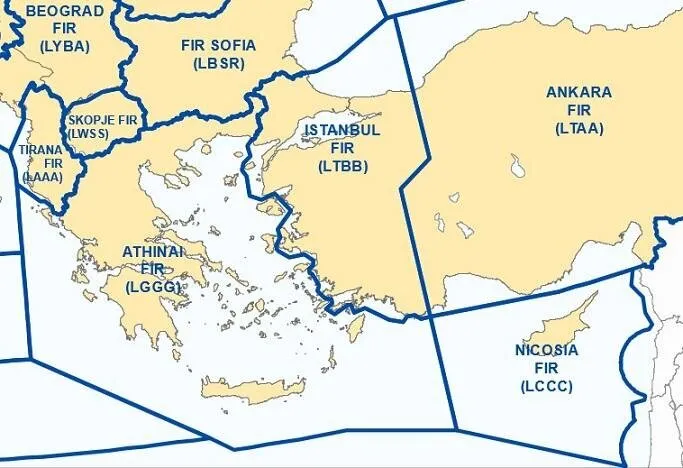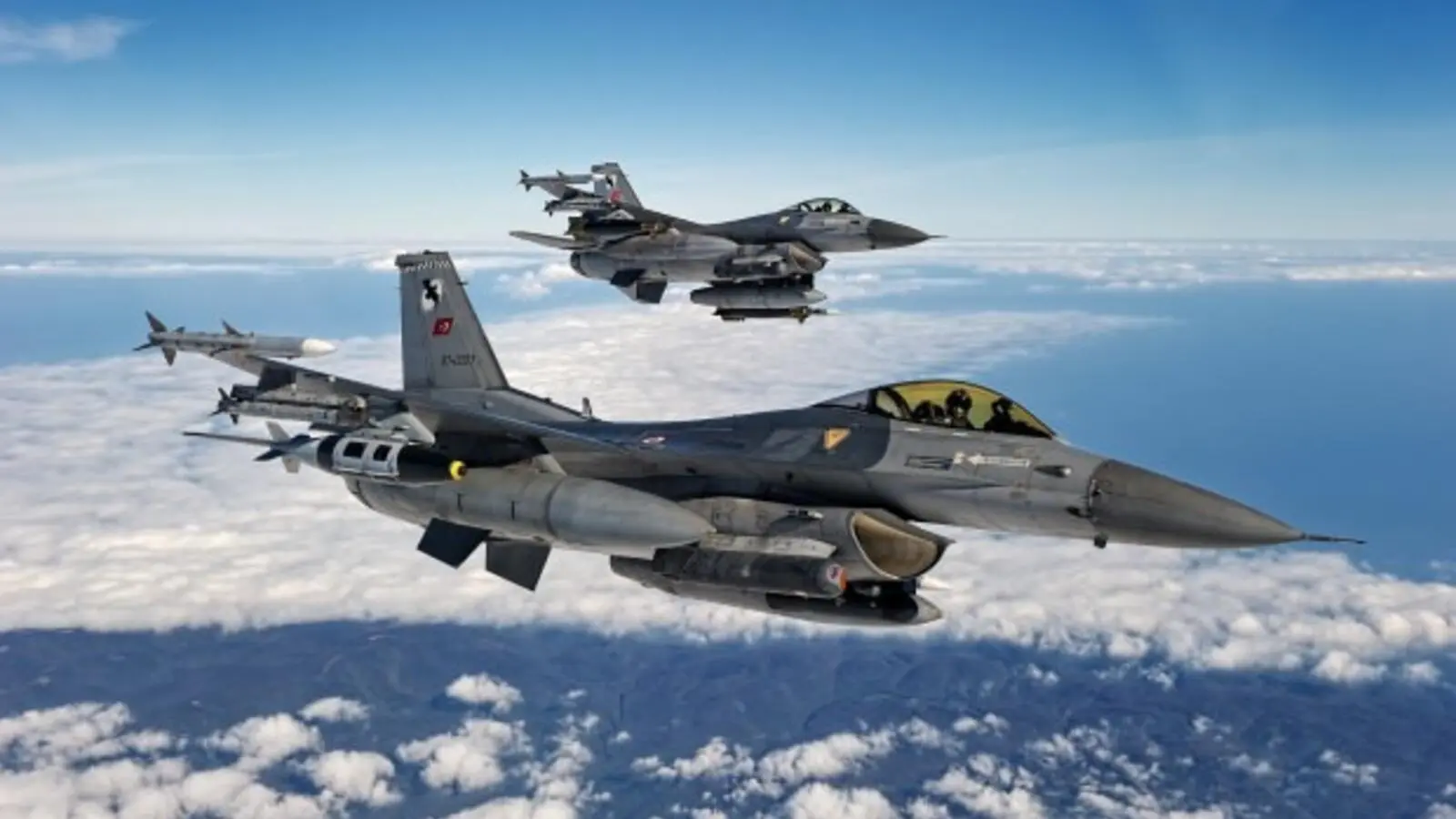By Maria Koulourioti,
At the beginning of the second week of 2024, Turkey has not failed to make its reappearance in the Athens FIR. In particular, two Turkish naval cooperation aircraft (1 CN-235 and 1 ATR-72) as well as a Turkish helicopter entered the Athens FIR today without filing a flight plan. Three violations of air traffic rules were recorded in the Athens FIR in the southeast Aegean area. The Turkish aircraft were identified by international rules according to standard practice, as made known by GEETHA. This recurrent event is a well-known phenomenon in Greek-Turkish relations. Nonetheless, International Law does not ring a bell for Turkey when it comes to Greece, though, surprisingly, it recognized the violation of Israel towards Palestine first in 2021. Thus, let us invest further into the history of Athens FIR and the timeline of the related Greek-Turkish conflicts.
The FIR is perhaps the least exposed zone in the Greek-Turkish conflicts. Indeed, the range of Turkish claims mainly includes all the remaining zones of sovereignty and sovereign rights (Egyalitis, National Airspace, EEZ, and Continental Shelf), as well as other claims such as grey zones, demilitarization of islands, etc., but claims on the FIRs are usually not served. This is due to the special status of the FIR, which will be presented below. However, this does not imply that there have not been historically significant differences and serious confrontations over this zone. Greek-Turkish disputes about the FIR still exist to this day, just that these disputes lie in the rights and obligations arising from it, and do not concern claims of ownership or demarcation as is the case with the other zones.
More specifically, FIR is an acronym for Flight Information Region (in Greek, Flight Information Region). It is a zone of sovereign rights, not sovereignty. The most important difference between the concepts of sovereignty and sovereign rights. The FIR of a region takes the name of the city where the competent authorities are located. Small countries usually have only one FIR, while larger countries have more, e.g., Greece has one, the Athens FIR, Turkey has two, the Istanbul FIR and the Ankara FIR, and Italy has three. The FIR of an area can consist of National Airspace, but it can also consist of International Airspace, as is the case with the Athens FIR. At this moment, and until the Greek Shelf and EEZ are fully demarcated, the FIR is by far the largest zone of sovereign rights in Greece.

In contrast to the other zones of sovereignty and sovereign rights, the FIRs of all countries (competent authorities) of the world have been separated by an international organization for reasons of international air navigation safety, the International Civil Aviation Organization (International Civil Aviation Organization / ICAO). This fact alone limits possible Turkish claims against Greece. In terms of the powers of a state, or more correctly, the respective competent authority (as a state may have more than one FIR administered by the same number of authorities) in the FIR, these are mainly air traffic control and arbitration. Scrutiny and arbitration are exclusive powers of each competent FIR authority. In particular, the respective competent authority is responsible for the safety, orderly conduct, and facilitation of the air traffic of civil and state planes. Furthermore, Air Traffic Services and some more specialized, technical services are provided within the FIR.
Regarding the Greek-Turkish differences on the subject. The first questioning of the Athens FIR by Turkey took place during the Turkish invasion of Cyprus at the end of July 1974, when, with instructions to air mariners (NOTAM) it defined areas of the Aegean Sea as dangerous areas. Until then, and since the delimitation of the FIRs by ICAO, Turkey has not again challenged the boundaries of the Athens FIR5. The culmination of these disputes was the issuance of NOTAM 714 on August 6, 1974, by the Turkish side, which constituted a de facto attempt to divide the Greek area. Through this NOTAM, Turkey requested international aircraft passing through the middle of the Aegean to receive relevant instructions and services from the Istanbul FIR and not from the Athens FIR, as the International Civil Aviation Organization (ICAO) had defined and as requested by the International Air Law. Greece responded with a counter-NOTAM (NOTAM 1157) where it denounced Turkey’s NOTAM as illegal and stated that the Athens FIR could no longer guarantee the safety of international air navigation in that area because of the Turkish NOTAM. Flights between Greece and Turkey at that time were stopped, international aircraft were forced to follow alternative airstrips to conduct their flights (which was costly and unprofitable for airlines and passengers) and for a while, in the Athens FIR, they only flew Greek aircraft that connected the mainland with island Greece. Turkey was eventually forced to withdraw its NOTAM following international backlash as it was causing a problem for international air navigation and was in violation of International Law.
The concept of sovereignty (sovereignty) is important in International Relations and International Law, although it may be difficult to define precisely or may be used incorrectly or abusively in public discourse. In general, contributions to the definition of sovereignty have been made, inter alia, by T. Hobbes and Jean-Jacques Rousseau in their works Leviathan and Social Contract respectively, while the modern meaning of the definition stems from the Treaty of Westphalia (1648). In simple words, where a state has sovereignty, it exercises its powers, i.e., executive, legislative, and judicial, while sovereignty is complete (over the entire scope of the area and not partially) and absolute (i.e. it is exercised only and exclusively by a state for a region and not from another state; otherwise, it would be concurrent). Thus, in the case of FIR, the State does not exercise complete sovereignty; the FIR is not identified and equated with the territory of a State. Therefore, the state simply exercises certain sovereign rights over it, as is the case with the EEZ or the Continental Shelf. A necessary distinction must therefore be made between these three zones (FIR, AOZ, Ice Shelf) and the zones of the National Airspace and Territorial Waters, where the complete sovereignty exercised by a State in these two is assimilated to the sovereignty over the ground.
To conclude, is the Athens FIR simply a point of view? Something objective, easily altered, depending on the origin of the nationality of the internationalist? And in the end, if IL is a matter of perspective, is that making Greece, Palestine, or any other country at stake of its air sovereignty?
References
- St. Yokaris, G. Kyriakopoulos, “International Airspace Law”, (Athens: Law Library, 2013), 95. 3
- Hamilakis. (2020, October 31). What is FIR and what are the Greek-Turkish differences? HuffPost Greece. Available here
- “Convention on International Civil Aviation”, Opened for Signature 7 December 1944, Annexes 2 and 11. Available here




